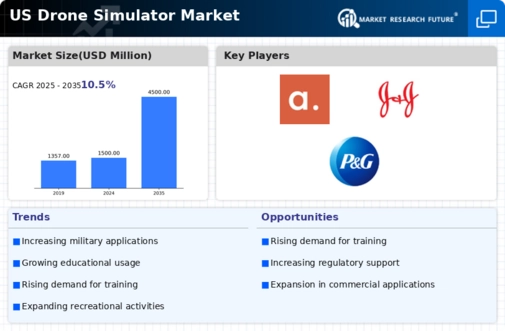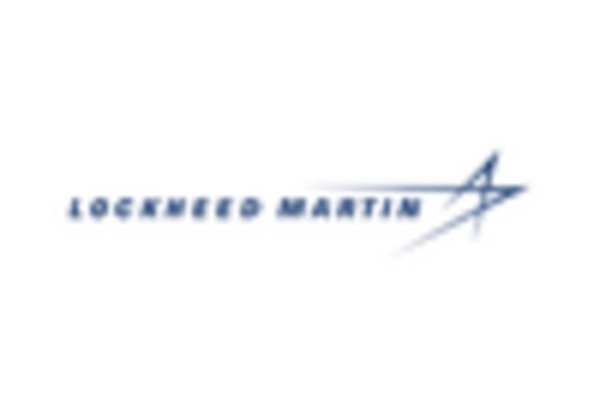Expansion of Educational Applications
The US Drone Simulator Market is witnessing a notable expansion in educational applications, particularly within academic institutions and vocational training programs. Schools and universities are incorporating drone simulators into their curricula to provide students with hands-on experience in piloting and operating drones. This trend is supported by the growing recognition of drones as essential tools in fields such as agriculture, environmental science, and engineering. By 2026, it is anticipated that educational institutions will account for a significant portion of the market, as they seek to equip students with the skills necessary for future employment in the drone industry. This educational focus not only enhances learning outcomes but also fosters a new generation of skilled drone operators.
Growth of the Commercial Drone Sector
The US Drone Simulator Market is poised for growth due to the rapid expansion of the commercial drone sector. As businesses across various industries adopt drone technology for applications such as aerial photography, surveying, and delivery services, the demand for skilled operators is surging. Simulators play a crucial role in training these operators, offering a cost-effective and efficient means of developing the necessary skills. The commercial drone market in the US is projected to reach 5 billion USD by 2026, which will likely drive further investment in simulation technologies. This growth presents an opportunity for simulator manufacturers to innovate and cater to the specific needs of commercial operators, thereby enhancing the overall training experience.
Increased Demand for Remote Operations
The US Drone Simulator Market is likely to benefit from the increasing demand for remote operations across various sectors. Industries such as agriculture, construction, and logistics are increasingly utilizing drones for tasks that require precision and efficiency. As these sectors expand their reliance on drone technology, the need for effective training solutions becomes paramount. Simulators provide a safe and controlled environment for operators to practice remote piloting skills without the risks associated with real-world operations. This trend is expected to drive market growth, as organizations recognize the value of investing in simulators to enhance operator competency and reduce operational costs.
Technological Advancements in Simulation
The US Drone Simulator Market is experiencing rapid growth due to technological advancements in simulation software and hardware. Enhanced graphics, realistic physics, and improved user interfaces are making simulators more appealing to both recreational and professional users. The integration of artificial intelligence and machine learning into simulation platforms allows for more adaptive training environments, which can cater to individual learning paces. As of 2025, the market for drone simulators in the US is projected to reach approximately 1.5 billion USD, reflecting a compound annual growth rate of around 15%. This growth is driven by the increasing demand for high-fidelity training solutions that can effectively prepare operators for real-world scenarios, thereby reducing the risk of accidents and improving operational efficiency.
Regulatory Influence on Training Standards
The US Drone Simulator Market is significantly shaped by regulatory frameworks that dictate training standards for drone operators. The Federal Aviation Administration (FAA) has established guidelines that require drone pilots to undergo rigorous training, which often includes simulator-based instruction. This regulatory push is likely to enhance the adoption of drone simulators across various sectors, including commercial, military, and recreational use. As regulations become more stringent, organizations are increasingly investing in high-quality simulators to ensure compliance and improve pilot proficiency. The market is expected to benefit from these regulations, as they create a structured environment for training that emphasizes safety and skill development.
















